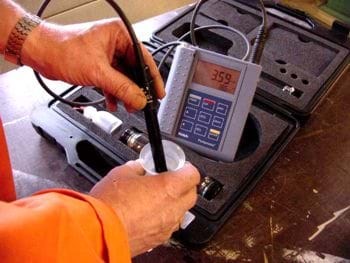
For decades, a traditional HCL measurement was carried out after a fire to determine the extent to which corrosion would take place on ferrous metals (mainly iron). However, this traditional measurement method had its limitations.
HCL (hydrochloric acid) is just one of the substances formed in a fire. With the help of the conductivity measurement, all substances that cause corrosion on metal can be measured. These substances have the capacity to conduct electrical current in water. By measuring the conductivity of an aqueous solution, the presence of electrolytes (acids and salts) can be demonstrated. It may therefore be other substances that, in the long term, have caused damage after a fire. The correct restoration measures can then be applied immediately based on the outcome of the conductivity measurement.